Country
Operator Image
Crash of a McDonnell Douglas MD-82 on Mt San Pietro: 180 killed
Date & Time:
Dec 1, 1981 at 0853 LT
Registration:
YU-ANA
Survivors:
No
Schedule:
Ljubljana - Ajaccio
MSN:
48047/998
YOM:
1981
Flight number:
JP1308
Crew on board:
8
Crew fatalities:
Pax on board:
172
Pax fatalities:
Other fatalities:
Total fatalities:
180
Captain / Total hours on type:
188.00
Copilot / Total hours on type:
288
Aircraft flight hours:
683
Circumstances:
The McDonnell Douglas MD-82 departed Ljubljana at 0741LT on a charter flight to Ajaccio, carrying 173 passengers and a crew of seven. Following an uneventful flight at FL330, the crew descended at FL190 at 0835LT then the copilot's son entered the cockpit and was allowed to take the observer's seat. Further descent instructions and radar vectors were obtained and at 08:47 the flight transferred to the Ajaccio Approach controller. The controller cleared the flight to the AJO VOR at FL110 and to report when overhead the VOR. He also passed on weather information and the reported that runway 21 was the runway in use. At 0849LT the crew reported over the AJO VOR. The controller cleared the flight to descend to 3,300 feet on the 247 radial of the AJO VOR. Three minutes later the flight radioed: "Rolling inbound out of six thousand". By that time the airplane had descended below the minimum holding altitude of 6,800 feet for that area. He then reported: "Turning inbound to Ajaccio because at the moment we are in cloud." The controller then replied: "Roger, 1308, report Charlie Tango on final, surface wind two eight zero degrees, twenty knots." There was no response from flight 1308. Flight 1308 was flying a holding pattern to lose altitude, but the controller believed the aircraft was going to make a direct descent to begin the final approach. Hence the reference to the Charlie Tango (CT) NDB beacon. The GPWS warning sounded in the cockpit and the crew increased engine power to gain altitude. 13 seconds later, at a speed of 285 knots, the left wing struck the Punta di Junca and was partially torn off. The aircraft rolled to the left and crashed seven seconds later in steep cliffs located 700 meters below, about 32 km southeast of Ajaccio-Campo dell’Oro Airport. The aircraft was totally destroyed and all 180 occupants were killed.
Probable cause:
The Committee considers that the cause of this accident was that the descent undertaken by the crew led the aircraft to find itself in clouds below the instruments safety altitude for that part of the flight path. The Committee noted that when the crew, alerted by the GPWS, tried to regain altitude, the maneuver proved to be insufficient to overcome the effect of strong descending air currents due to relief and strong wind, present in the area where the aircraft was flying at that time. The following contributing factors were reported:
- The committee felt that the crew did not show the necessary rigor when preparing its approach. It does not appear that a logical order has guided the crew in the revision and memorization of various parameters, including the safe altitude and the maximum speed of the holding circuit, which in any case, did not catch the attention of the crew in an appropriate manner. In addition, the presence of a young child on the observer seat cockpit, until the end of the flight was a dispersion factor of attention;
- The misunderstandings which have developed in the exchange of messages between the captain and the approach controller could disrupt, at certain times, the working conditions of the crew. The controller consequently did not have an accurate representation of the progress of the aircraft in the performance of its procedure and, therefore, did not intervene when two messages "call you inbound on radial two forty seven", and then "rolling inbound out of six thousand" would have told him, if he had better interpreted them, an ambiguous situation for the first and abnormal and dangerous for the second;
- The advice to the commission on vectoring habits and on habits supposedly used by some national air traffic services to systematically take into account the safety altitudes in formulating control permissions, leads to the suspicion that some crew have a slightest concern about the safe altitudes;
- Airspeed of the aircraft was greater than the maximum speed of the holding pattern and crew did not adopt the correction factors adapted to altitude wind they had encountered during the previous segment th flight. This led to the airplane overfly an area where, although it is included in the protected area of the holding pattern, the upper air movements were particularly important;
- The symbolic representation of the holding pattern on the approach chart used by the crew corresponds to a path, with no wind, and an aircraft which would have approximately 150 knots indicated airspeed. It calls not evident attention to Airmen on the actual dimensions of the actually travelled circuits in flight, nor therefore on altitude over the terrain reliefs.
- The committee felt that the crew did not show the necessary rigor when preparing its approach. It does not appear that a logical order has guided the crew in the revision and memorization of various parameters, including the safe altitude and the maximum speed of the holding circuit, which in any case, did not catch the attention of the crew in an appropriate manner. In addition, the presence of a young child on the observer seat cockpit, until the end of the flight was a dispersion factor of attention;
- The misunderstandings which have developed in the exchange of messages between the captain and the approach controller could disrupt, at certain times, the working conditions of the crew. The controller consequently did not have an accurate representation of the progress of the aircraft in the performance of its procedure and, therefore, did not intervene when two messages "call you inbound on radial two forty seven", and then "rolling inbound out of six thousand" would have told him, if he had better interpreted them, an ambiguous situation for the first and abnormal and dangerous for the second;
- The advice to the commission on vectoring habits and on habits supposedly used by some national air traffic services to systematically take into account the safety altitudes in formulating control permissions, leads to the suspicion that some crew have a slightest concern about the safe altitudes;
- Airspeed of the aircraft was greater than the maximum speed of the holding pattern and crew did not adopt the correction factors adapted to altitude wind they had encountered during the previous segment th flight. This led to the airplane overfly an area where, although it is included in the protected area of the holding pattern, the upper air movements were particularly important;
- The symbolic representation of the holding pattern on the approach chart used by the crew corresponds to a path, with no wind, and an aircraft which would have approximately 150 knots indicated airspeed. It calls not evident attention to Airmen on the actual dimensions of the actually travelled circuits in flight, nor therefore on altitude over the terrain reliefs.
Final Report:
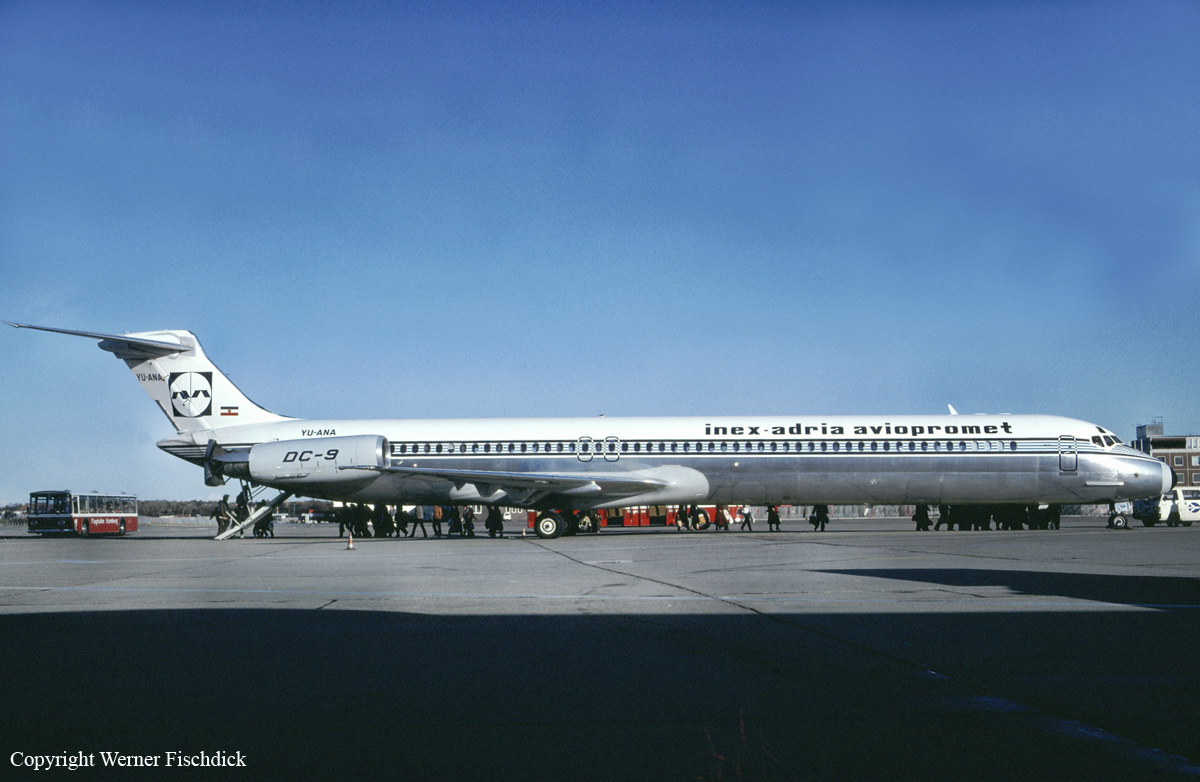
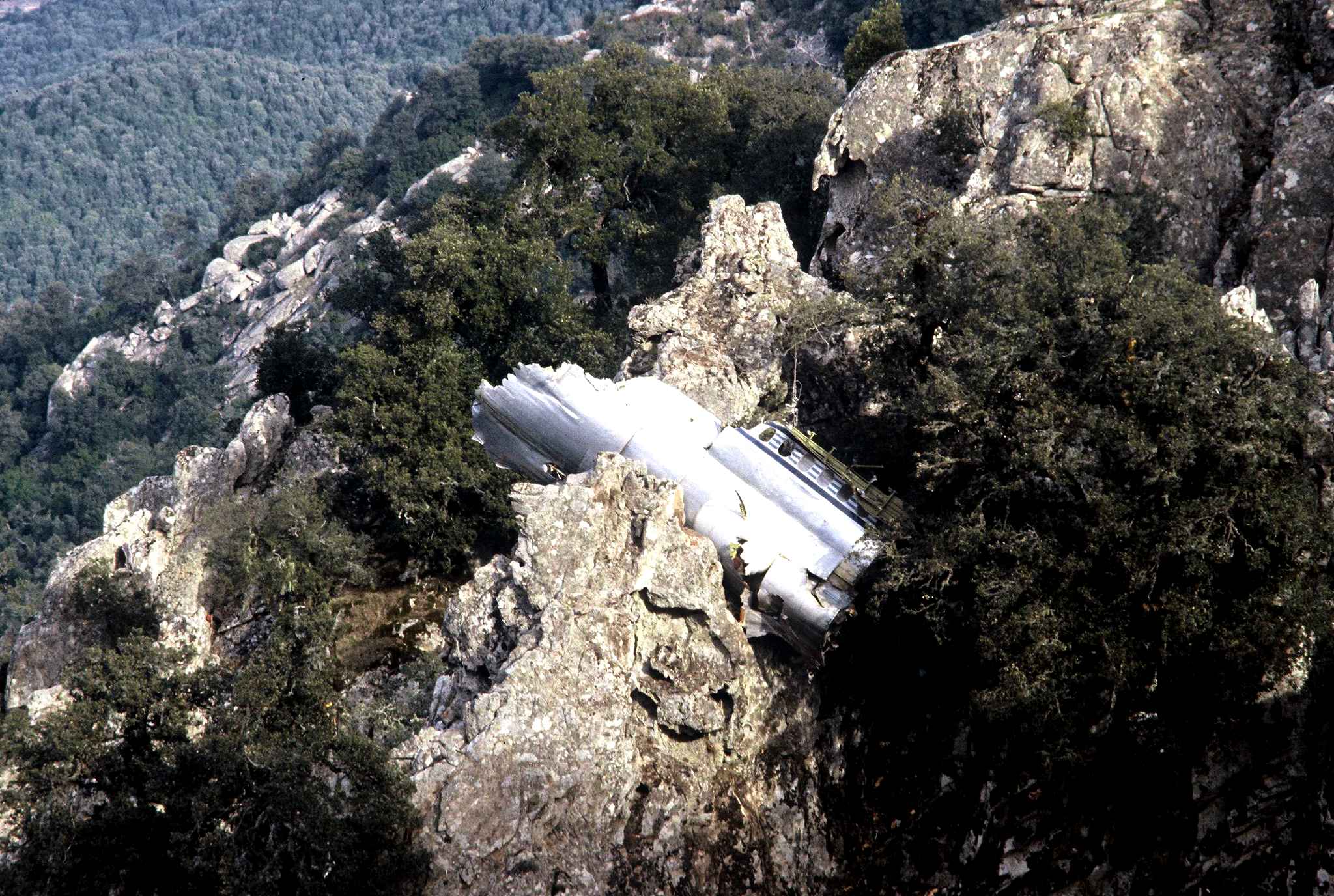
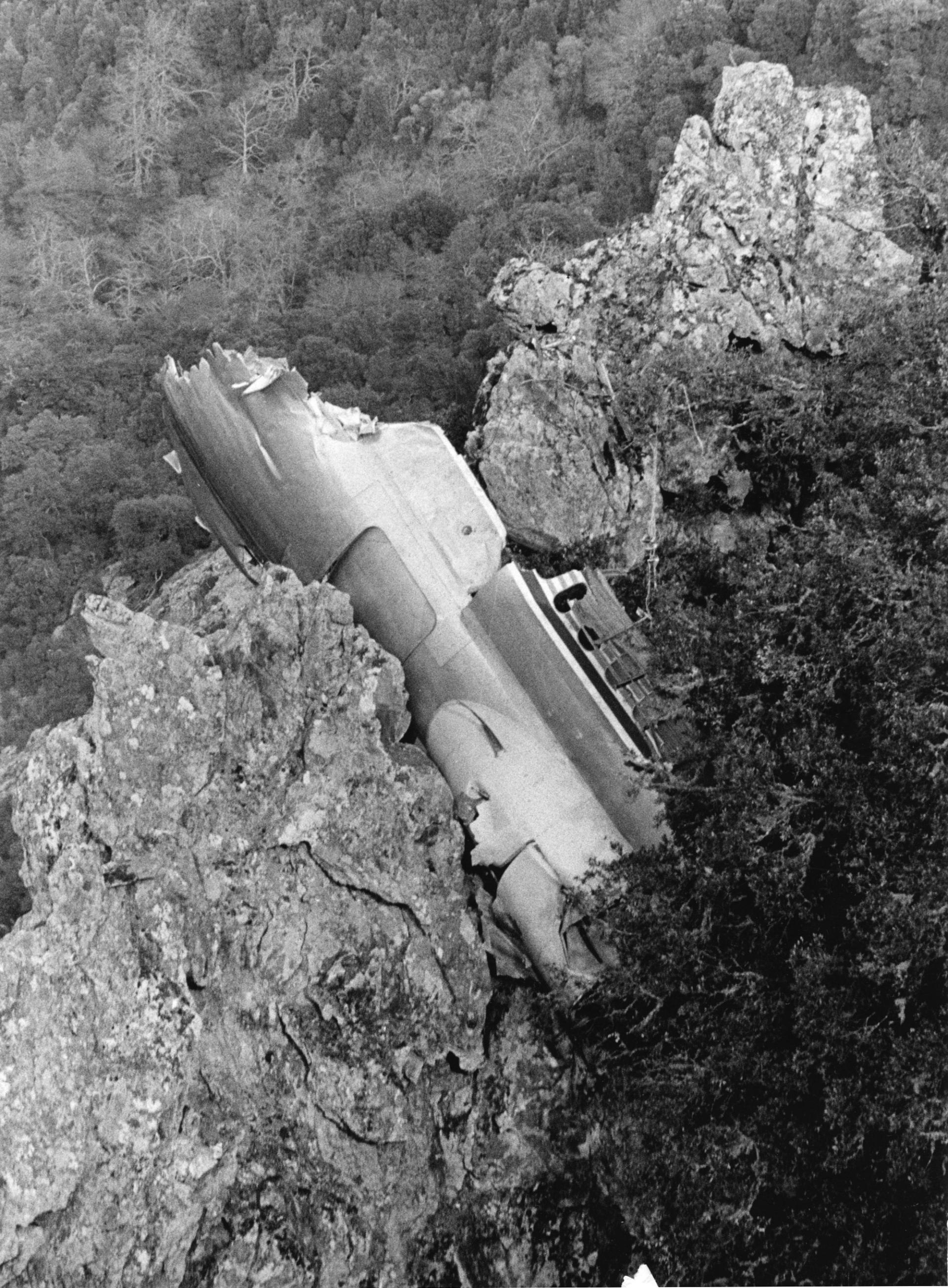

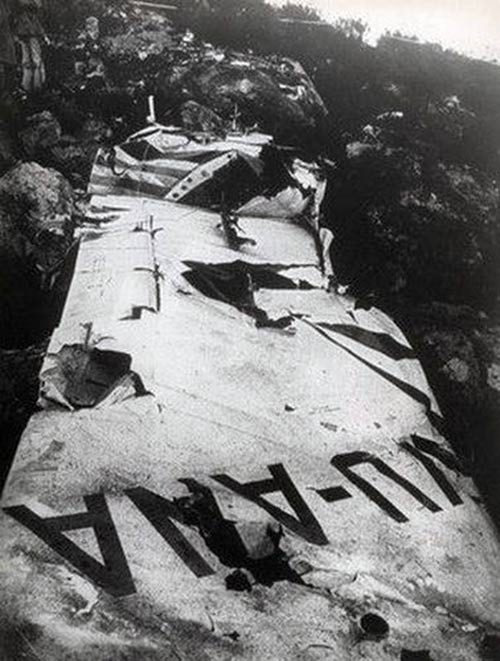
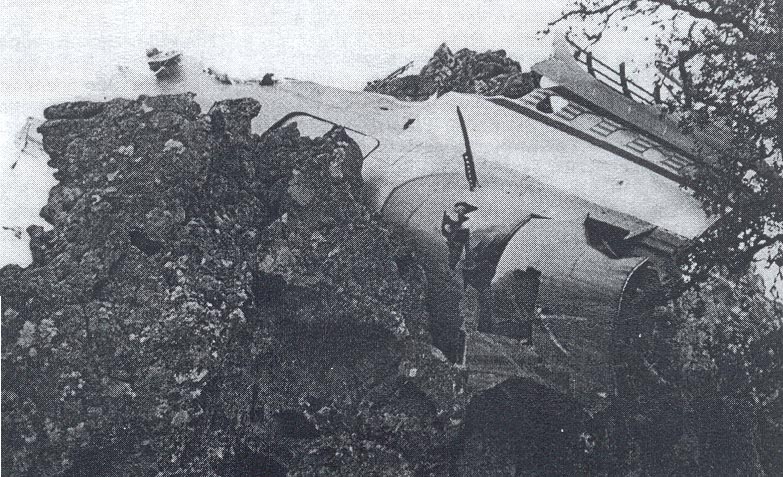
Crash of a Douglas DC-9-32 in Vrbovec: 113 killed
Date & Time:
Sep 10, 1976 at 1114 LT
Registration:
YU-AJR
Survivors:
No
Schedule:
Split - Cologne
MSN:
47649/741
YOM:
1974
Flight number:
JP550
Crew on board:
5
Crew fatalities:
Pax on board:
108
Pax fatalities:
Other fatalities:
Total fatalities:
113
Captain / Total hours on type:
3250.00
Copilot / Total hours on type:
1583
Aircraft flight hours:
1345
Aircraft flight cycles:
990
Circumstances:
Hawker Siddeley HS-121 Trident 3B operated by British Airways as flight BE476 and a McDonnell Douglas DC-9-32, operated by Inex-Adria Aviopromet, were destroyed when both aircraft crashed near Vrobec following a mid-air collision. All 176 on board both aircraft were killed. The Trident was on a scheduled flight from London-Heathrow Airport in England to Istanbul-Yesilköy Airport in Turkey, carrying 54 passengers and a crew of 9. The aircraft took off at 08:32 GMT and the flight proceeded normally. First contact with the Zagreb Area Control Centre was established on the Upper Sector frequency 134,45 MHz at 10:04 GMT. The flight was requested to report passing the Zagreb VOR at flight level 330. The aircraft flew along the centreline of airway UB5 with slight side deviation 1-2 km to the right due to wind. At 2 minutes and 50 seconds before the collision, the aircraft changed heading to 115° to head back towards the airway centreline. Airspeed was 295 Kts. The DC-9 departed Split Airport at 09:48 GMT to fly 108 West German tourists back to Cologne. Flight JP550 was issued instructions to climb to FL180. At 09:54 the flight, on passing flight level 130, switched to the Zagreb Area Control Centre lower sector east frequency of 124.6 MHz, receiving clearance to climb to FL240 and later to FL260. At 10:03 the crew switched to the frequency of the middle sector controller, responsible for safety and regulation of traffic between flight levels 250 and 310. This controller cleared to flight to FL350. The aircraft assumed a heading of 353° and a speed of 273 Kts as it passed a beam and to the west of the KOS NDB, approximately 2-3 km from the airway centreline. While heading towards the Zagreb VOR, the flight crew radioed the Upper Sector controller on frequency 134,45 MHz at 10:14:04 GMT and reported that they were climbing through FL325. The controller then requested, in Serbo-Croatian, flight JP550 to maintain their present altitude and report passing the Zagreb VOR. The controller stated that an aircraft was in front passing from left to right at FL335, while in fact BE476 was at FL330. At 10:14:38 the crew replied, also in Serbo-Croatian, that they where maintaining FL330. Three seconds later both aircraft collided. The outer five meters of the DC-9's left wing cut through the Trident's cockpit. Due to the sudden decompression, the forward part of the Trident's fuselage disintegrated. The remaining part of the fuselage struck the ground tail-first. With it's left wing torn off, the DC-9 tumbled down and hit the ground right-wing first.
Probable cause:
Direct cause of the accident was the struck of the DC-9 wing into the middle side of the Trident 3B fuselage which occurred at the height of 33.000 feet above Zagreb VOR so that both aircraft became uncontrollable and fell on the ground.
- Improper ATC operation,
- Non-compliance with regulations on continuous listening to the appropriate radio frequency of ATC,
- Non-performance of look-out duty from the cockpits of either aircraft.
- Improper ATC operation,
- Non-compliance with regulations on continuous listening to the appropriate radio frequency of ATC,
- Non-performance of look-out duty from the cockpits of either aircraft.
Final Report:
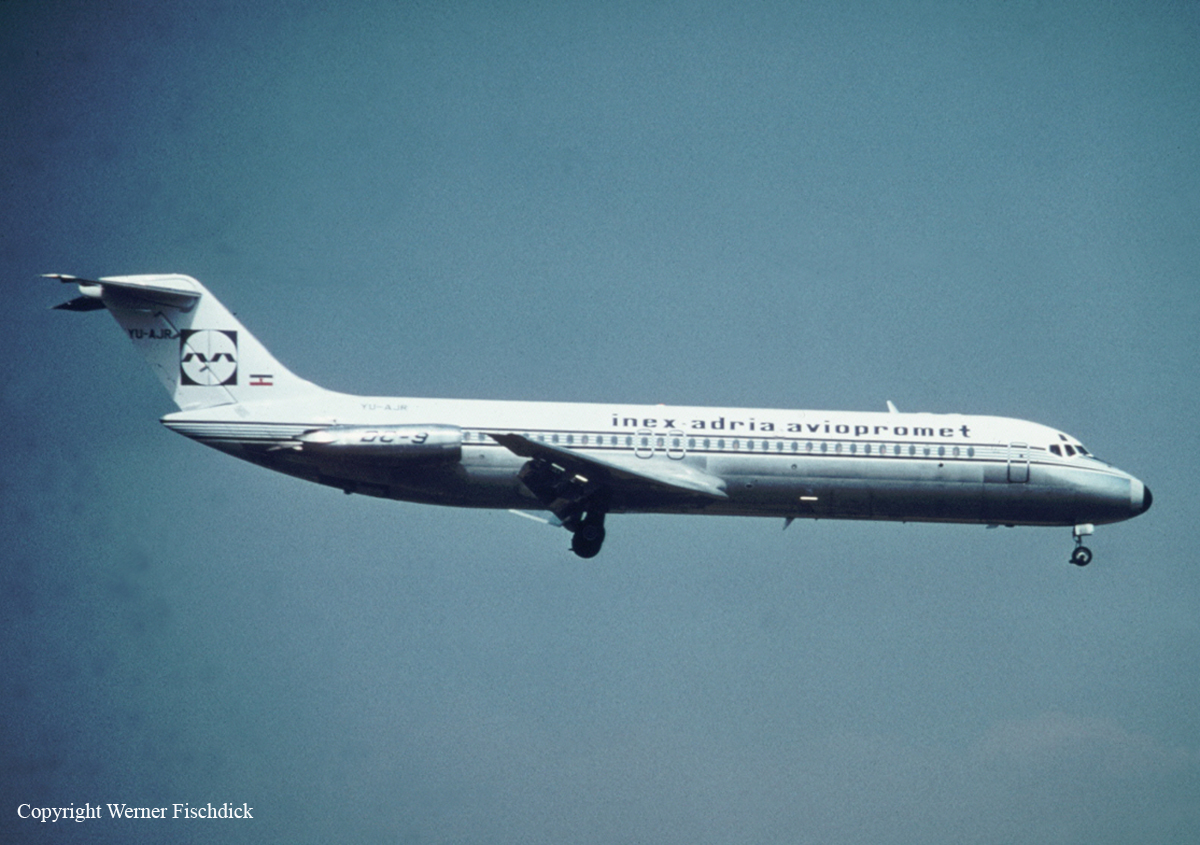
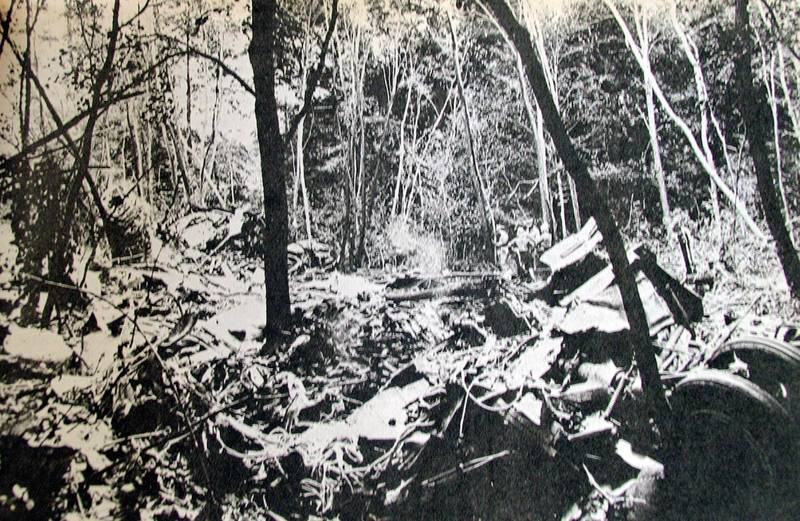
Crash of a Douglas DC-9-32 in Prague: 75 killed
Date & Time:
Oct 30, 1975 at 0920 LT
Registration:
YU-AJO
Survivors:
Yes
Schedule:
Tivat - Prague
MSN:
47457/620
YOM:
1971
Flight number:
JP450
Crew on board:
5
Crew fatalities:
Pax on board:
115
Pax fatalities:
Other fatalities:
Total fatalities:
75
Circumstances:
While descending to Prague-Ruzyne Airport, the crew encountered poor weather conditions with fog, rain and a visibility limited to 1,500 meters. The crew passed below the MDA and the aircraft entered the Vltava Valley when the captain decided to gain height and increased engine power. The airplane struck tree tops and crashed in a residential area (houses and gardens) located about 8 km short of runway. 45 people were injured, among them a crew member, while 75 other occupants were killed. At the time of the accident, the ILS system was inoperative.
Probable cause:
The crew descended below the MDA in foggy conditions until the airplane struck obstacles and crashed.

















